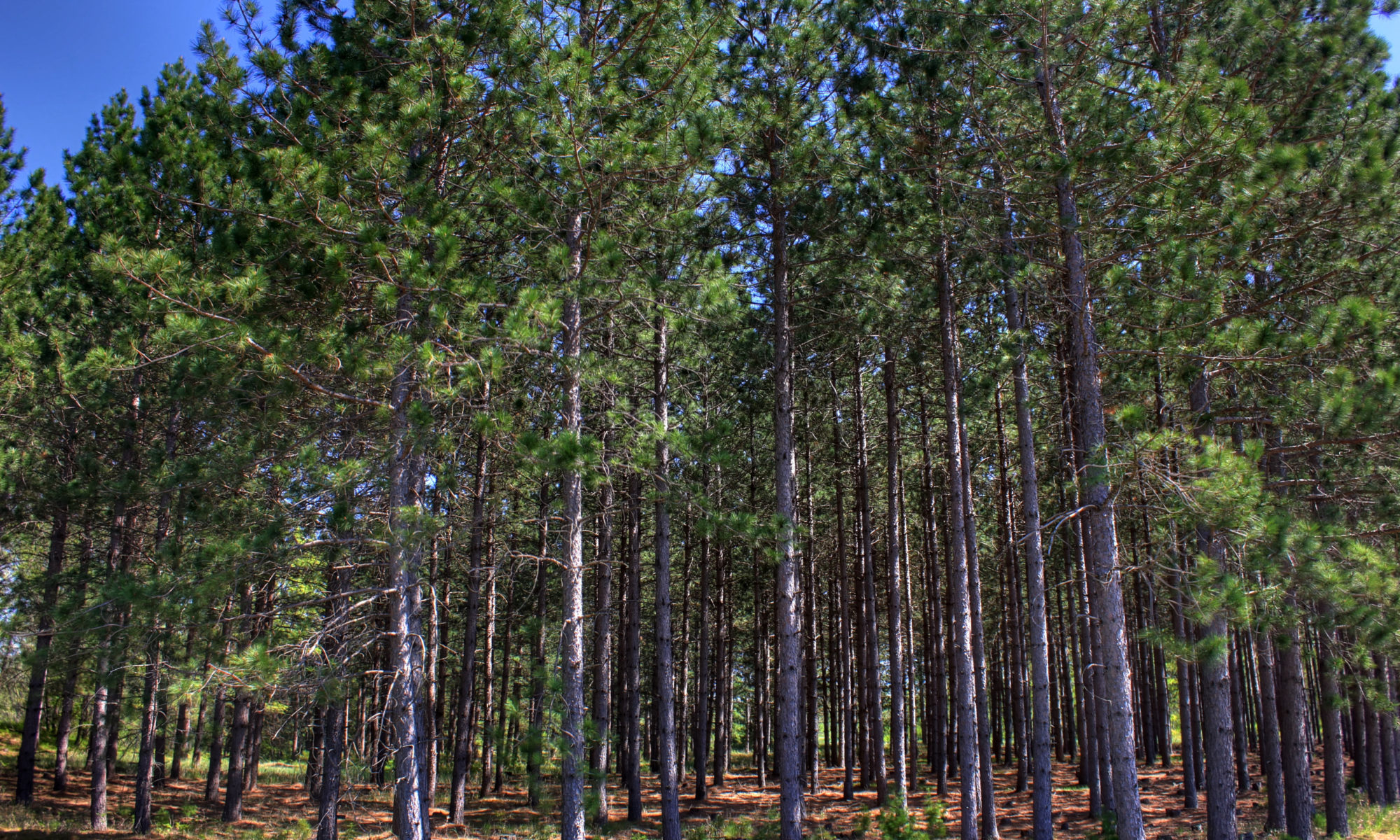Feature Image: Pine forest in Governor Thompson State Park, WI, USA. Yinan Chen, Public Domain, via Wikimedia Commons
Article: Groundwater subsidizes tree growth and transpiration in sandy humid forests
Authors: D. M. Ciruzzi and S. P. Loheide
Drought is often in the news these days, especially in places with arid and semi-arid climates where water is already scarce. While ecosystems have adapted over millennia to cope with dry climates and seasonal droughts, the increasing intensity and frequency of drought due to climate change and human demand for water can pose significant threats to ecosystem health and survival.
Some plants have a hidden adaptation for surviving drought: their roots can take up groundwater even once the surface soils have dried out. Scientists have found that in semi-arid environments, use of groundwater has important positive effects on the structure and productivity of forests. At the same time, forests that use groundwater affect the local hydrology, as they can use water to such an extent that they decrease groundwater levels and flow in nearby streams. This relationship between plants and groundwater is so important that some governments have policies to manage vegetation and water together in semi-arid climates in order to meet goals for human consumption and ecosystem protection. But what about in humid climates, which are likewise susceptible to drought? Do plants here also use groundwater, and if so, how important is it for their growth? In this study, the authors set out to answer these questions for forests in the sandy soils of Wisconsin, USA.
Sandy soils are better at draining water than retaining it, so even in humid climates, these soils frequently dry out in between storms. Because water is a crucial ingredient for tree growth and survival, the trees that can continue to access water even when surface soils are dry should have an advantage over those that cannot. Over years, trees record the history of growth in their rings. The authors measured tree rings from Pinus Resinosa (red pine) to determine differences in growth between sites that on average have shallow (<2.5 m) and deep (>3 m) depths to groundwater. The authors estimated how much groundwater trees use by measuring daily groundwater fluctuations during the summer growing season. During the day trees use water, causing the depth to groundwater to increase, while at night water use is minimal and the groundwater levels recover due to slow recharge from the soils above or other areas of the landscape.

The authors found that access to groundwater made a big difference for the trees they studied. Tree rings showed that growth was 63% higher in places with shallow groundwater than those in nearby places where it was deep. The groundwater fluctuation data showed that in places with the shallowest groundwater (0.5-1.5 m), trees used groundwater on 81% of summer days when it did not rain. These trees used 74% more groundwater on average than those in sites where the groundwater was deeper.
Given the significant role of groundwater in sustaining forest growth in this humid setting, this research suggests that some of the management concepts that have been applied to more arid environments may be useful here as well. Forests without access to shallow groundwater are likely to be less resilient to drought, and therefore may benefit from targeted management to increase resilience, such as tree thinning. At the same time, when pumping groundwater is necessary, we now know that it could have significant effects on forest productivity if the nearby forests have access to shallow groundwater. With this knowledge in our management toolbox, we can better meet human water demands and sustain ecosystems into the future.
Wet Feet? No problem: sandy humid forests grow best with access to groundwater by David Litwin is licensed under a Creative Commons Attribution-ShareAlike 4.0 International License.

